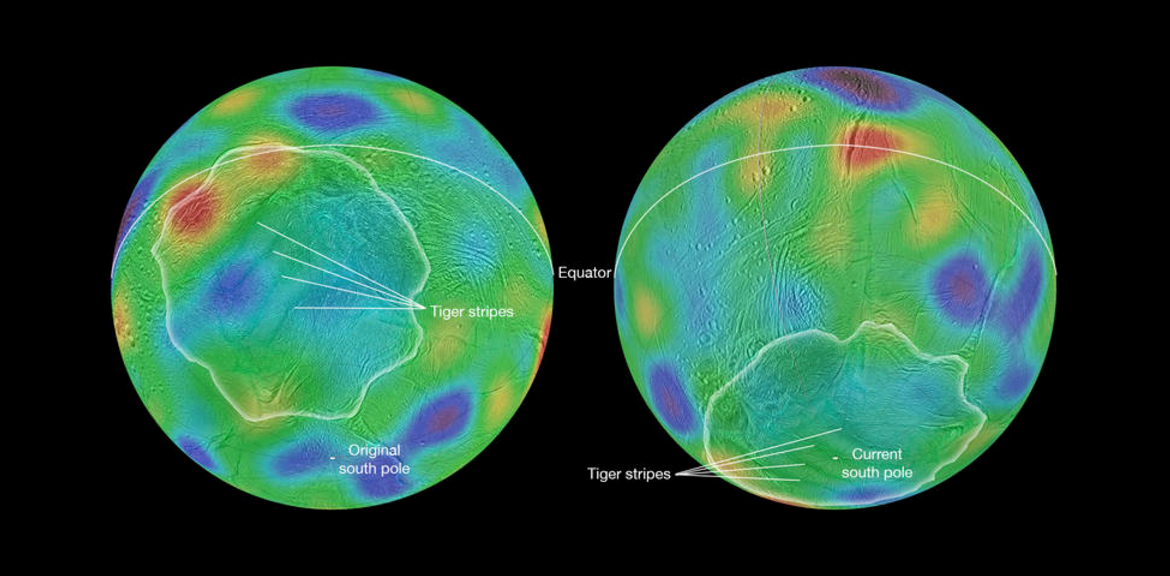
NASA’s Cassini mission has collected information that researchers believe evidences that Saturn’s moon, Enceladus, was tipped over at some point in the past. Scientists found that the moon’s spin axis, or the line passing through the center of the moon’s mass at its poles, has changed. Scientists believe that the moon’s axis was reoriented by about 55 degrees. Radwan Tajeddine, a Cassini imaging team associate at Cornell University, Ithaca, New York, and the lead author of the paper said, “We found a chain of low areas, or basins, that trace a belt across the moon’s surface that we believe are fossil remnants of an earlier, previous equator and poles.”
Scientists believe that this area used to be close to the equator and that an outside force, such as an asteroid, may have hit the surface. Tajeddine says, “the geological activity in this terrain is unlikely to have been initiated by internal processes. In order of drive such a large reorientation of the moon, it’s possible that an impact was behind the formation of this anomalous terrain.” Fractures, that Cassini discovered spray jets of water vapor and icy particles from the underground ocean, are found across Enceladus’ surface and known as the moon’s “tiger stripes.” Scientists believe that an asteroid, or another large disturbance, created the tiger stripe fractures and caused the moon to shift/reorient its mass. They believe that this shift in mass made the moon’s orbit unstable, and it would take more than a million years for the orbit to stabilize to what we see today.
When the orbit settled, the north-south axis changed. The altering of the north and south poles is titled a “true polar wander.” This shift in poles and orbit explains what scientists are seeing in Enceladus’ poles today. Enceladus’ current north pole looks older and is covered in craters while the south pole is geologically active and has much less craters. #GetExcitedSU for the polar wonder idea and for the progress of the Cassini Mission!
